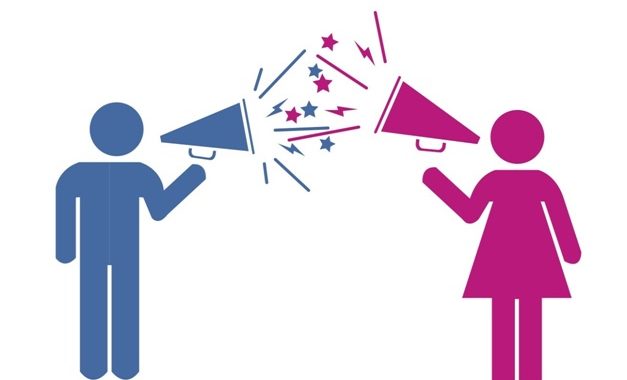Read this article to understand the topic of communication barriers or barriers to communication in management or an organization…
What are Communication Barriers?
The barriers to communication are factors that block the effectiveness of communication. They result in a mismatch between understanding of the information by the sender or the receiver. These barriers are easily occurring at any stage of the communication process-
Sending-Encoding-Transmission-Decoding or Receiving.
The sender may not be audible to the audience, he may not correctly convert his message into signals, the choice of the channel may be faulty, receiver’s understanding of symbols or codes may be different from that of the sender or receiver may not be in a mood to listen to the information.
So, this point occurs the barriers in communication.
Types of Effective Communication Barriers:
This paragraph provides a list of the types of barriers to effective communication in an organization or management. The barriers are in (3) three types like:
- Technical barriers
- Language barriers
- Psychological barriers
1. Technical Barriers:

Technical barriers explain to a physical, informational, and social environment in which the message is transmitted or transferred.
Some of the various technical barriers are as follows:
(i) Timing:
Timely transmission of knowledge is important if senders want receivers to follow the instructions. Companies, where work is done in various shifts, employees leaving one shift, should communicate with employees joining the next shift.
If employees of day shift report at duty after the employees of night shift have left, important messages may be left out from being communicated, influencing the productivity.
(ii) Information overload:
It explains the excessive transmission of information. Detailed information than what the receiver can process is transmitted to him. The receiver cannot analyze, understand, and act upon information or details overload beyond his mental capacity.
It explains various problems:
(a) If they want to be specific, it may delay the managing of information.
(b) They may make errors in processing excessive information.
(iii) Cultural differences:
Cultural differences originate when superiors work with people of different cultures. Culture represents the national or local barrier that is important for any business organizations involved in overseas business. Culture explains norms, values, beliefs, perceptions, and, attitudes of people of different nations (India, Japan, America, etc.) or regions (different regions in our country).
Cross-Cultural Communication Barriers
When a superior deal with workers of different nations (in multinational companies), they should regard cultural beliefs and values, otherwise, they may not be able to bring what they really wish to.
(iv) Information gaps:
Full information is not transmitted from one level to another level of management. Some part of the information is retained at fixed levels and the gap is filled by some unintended information. The information gap is worthless like the information load.
(v) Focus:
Generally, the focus is more important in communication. In various advertisement campaigns, customers lose sight of the product but remember the sound, light, and visual effects of the advertisement. The main purpose of the advertisement is to target the message, not the messenger.
(vi) Physical barriers:
These barriers originate due to the nature of the environment. It is like a natural barrier which exists its staff is located in various buildings or various sites.
Likewise, outdated or poor equipment, particularly the failure of management to introduce new technology may also cause problems. The shortage of staff is also another factor which regularly causes communication difficulties for an organization.
(vii) Organizational barriers:
These different barriers contain various things like:
- Organization policies and guidelines should be clear to avoid misinterpretations and misconceptions.
- Make strict rules and regulations to eliminate faulty communications.
- Too many levels in the organization hierarchy can delay transmission of the information.
2. Language barriers:

Language barriers include various words, jargons, and various interpretations by senders and receivers. The same statement may carry a different meaning for different individual. This stops the process of effective communication. So, common language barriers are as follows:
(i) Poor messages:
Clear thinkings and ideas but wrongly chosen sentences or their words are as bad as poor ideas. Wrong sentences and their words can lead to misinterpretation of messages. Poorly described or misunderstood messages can result in confusion.
Effective communication includes the right choice of words, sentences, and paragraphs.
(ii) Semantics:
Semantics is a type of study of words and their brief meanings. Problems arising on account of transmission meanings are semantic problems. Different words mean a different meaning to a different individual.
If the sentence or paragraph means the same to the sender and the receiver, communication is adequate and effective, otherwise, communication becomes ineffective.
(iii) Inconsistency in verbal and non-verbal communication:
Generally, verbal communication is a very powerful mode of communication, but non-verbal communication is equally effective in transferring the right message. Not only should our language be clear, our expressions, facials, body movements, and gestures must also correspond to the language.
3. Psychological Barriers:

These barriers are a big source of communication breakdown. Psychological factors represent people’s state of mind. We are feeling flexible to information when we are happy. However, we have personal problems, this influences communication. It includes various sub-barriers like:
(i) Fear:
Communication in an environment of fear, punishment, threats, and penalties is a barrier to effective communication. There must be a positive motivation for receivers to carry out the business or communication.
(ii) Filtering:
Filtering refers to manipulating information in a way that only favorable or useful information is sent to the receiver. In business companies, when messages are transferred vertically along the chain of command, some part of information normally gets lost on the way.
Filtering is a type of common barrier when the organizational or business companies hierarchy has a large number of levels.
(iii) Poor listening:
Listening process is very different from the process of hearing. We do not listen when we are obsessed with other engagements and thoughts. When a sender is speaking on the subject in which we are not interested, we hear but do not pay full attention to what he is trying to say.
Unless we do not listen to them, communication will not be effective.
(iv) Poor retention:
The human man never retains all that is communicated to him orally. He moves to forget a part of the useful information because of his limited retention capacity. It is preferable to make the receiver repeat the message and use more than one mediums to communicate the information.
Sending reminders can easily help to overcome this problem.
(v) Perception:
Perception is knowledge, understanding, and feeling of the subject-matter transferred. People with different educational, emotional, and cultural backgrounds understand the message differently. People want the perfect message from our opponent. If sender perception is different from the perception of the receiver, it will make the message ineffective.
In perception, the same understanding of thinking is very important for both of them (sender or the receiver).
(vi) Emotions:
Emotions- a feeling of love, compassion, anger, threat, jealousy, etc. largely affect the encoding and decoding of the message. Emotions are very important and communicators must understand them t0 avoid breakdowns.
If the sender is happy, then the message that has been transferred will also be effective but if the sender is not happy then the message that is transferred will not be effective either. Calm or good emotions help in effective communication neither not.
So, this is the full explanation on the topic of communication barriers or barriers to communication…


